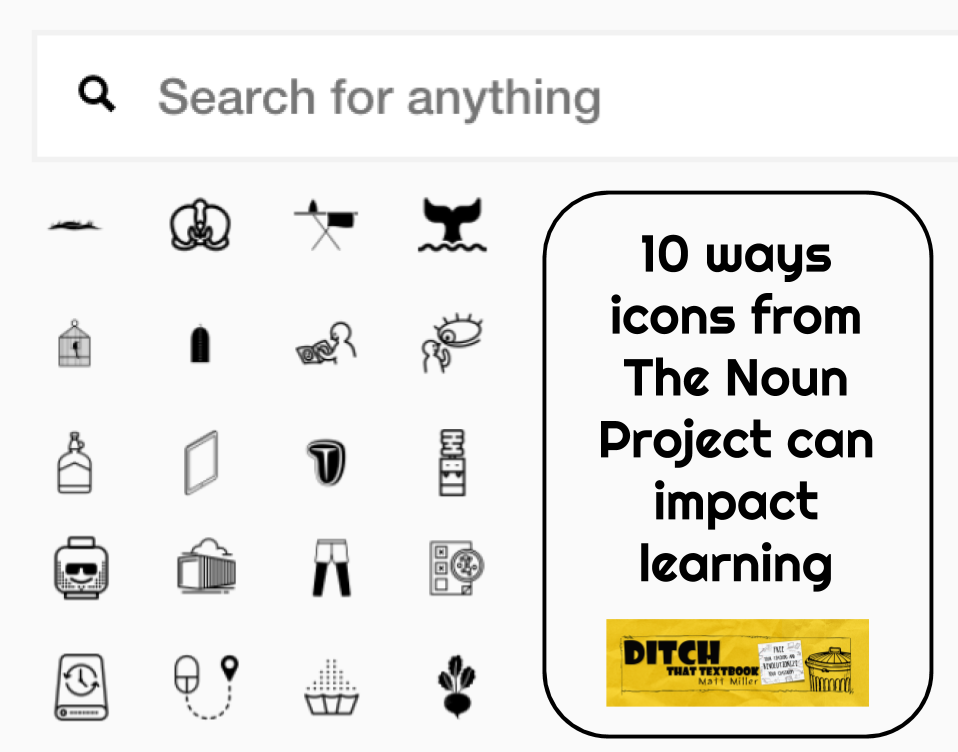
Icons can help students construct understanding and remember new ideas. The Noun Project has the hook-up. Here's how! (Icons via TheNounProject.com)
Images are powerful and very brain friendly.
The majority of people think in pictures -- and some think exclusively in pictures.
At times, including photos, illustrations and other images can be considered silly and unnecessary in education -- almost as if adding them is like putting up decorations in learning.
Adding visuals to instruction and to products of learning can help learning stick long-term. And long-term learning is the least silly thing I can think of in education!
There are TONS of places to get great images to incorporate into learning. There are free image sites like Pixabay and Unsplash. You can use the Creative Commons search to find images, music, videos and more.
Photos can convey an idea, emotion, concept, etc. well. But if you want to communicate a simple idea quickly and efficiently, icons do the job.
And my favorite source for icons is The Noun Project (TheNounProject.com).
What is the Noun Project?
The site bills itself in this way: "Icons for everything. Over a million curated icons, created by a global community."
Just load up the site and you'll see a variety of what's available on thenounproject.com:
A steak. A Lego head with sunglasses. Wiffle ball. Flip flops. Clapping hands. A radish.
Artists from all over the world create these icons and add them to the Noun Project so others can use them in their work.
The icons are available to use in two different ways:
- Royalty free (paid) -- Pay for the icon ($1.99 per icon, unlimited icons for $9.99/mo or $39.99/yr) and you can use it wherever and however you want without crediting the creator.
- Creative Commons (free) -- Use the icon for free but give credit to the creator according to the Creative Commons license. (The attribution you should use is embedded in the image.)
As educators, our favorite price is free, right? Download and use icons from The Noun Project in your work and include it somewhere in the work you're creating. Here are The Noun Project's requirements for attribution.
There's also educator pricing! If you want to use icons without attribution AND support the efforts of The Noun Project, you can get a NounPro account at half price. The educator discount makes it $19.99 per year.
How can I use icons in class?
There are loads of ways to include these visuals in your work. Here are some ideas:
1. Infographics with The Noun Project icons
This one is my favorite! I'm a HUGE fan of creating infographics out of icons from The Noun Project. In many ways, infographics beat the traditional essay or research report. They combine the information from the research with visuals that make the infographic easier and more fun to read. Imagine students creating something with their research that they'd want to share with their friends and family!
I wrote an entire blog post about creating infographics with Google Drawings. Icons from The Noun Project played prominently in that blog post.
Here are a few infographics I've created using The Noun Project icons:
Madeline Hunter Lesson Plan Template- This infographic was created to support the CUE BOLD conference. I wrote about the conference in this blog post.
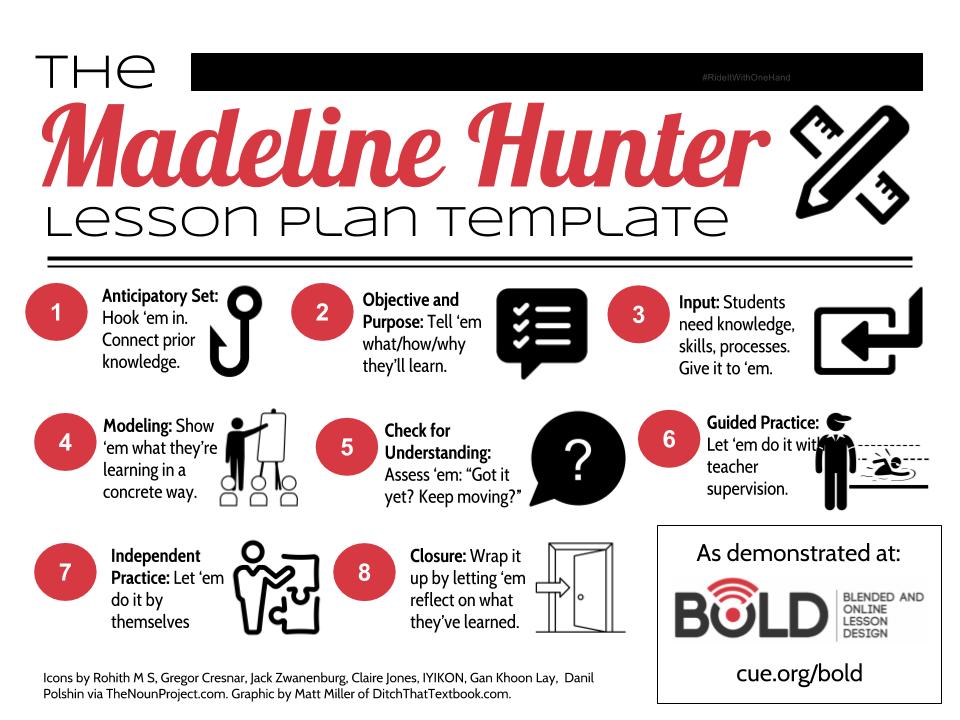
Video calls in the classroom infographic- I included this infographic in a blog post about doing video calls in the classroom.

Skills of the future infographic- The Noun Project icons were a key part of Ditch That Homework, a book I co-authored with Alice Keeler.

Want to see an infographic created from start to finish? Watch this video of a whole infographic from start to finish in just 90 seconds!
2. Presentation slides using The Noun Project icons
If you present with PowerPoint, Keynote or Google Slides, icons from The Noun Project are a natural complement. Text-heavy slides have been a common frustration of audiences -- student and teacher audiences included! -- for years. If you need to talk to a group, let your spoken words do the work and your slides amplify your message. Slides with images -- even a single image -- can have great impact.
3. Enhance teaching materials with icons
Do you distribute handouts to your students? Study guides? Printed activities for them to complete? If your materials don't have any images at all, you may be missing out on a great instructional advantage. Use images (including icons) meaningfully to connect ideas in the brain more concretely.
4. Badges
Using badges to provide a bit of extra motivation for learners is hot in education right now. Video game platforms offer badges as incentive for playing. Apps include them. Snapchat and other social media use a form of them in "streaks" -- posting consecutively for a number of days. Looking to incorporate badging in your classroom? Icons from The Noun Project can be a great way to find those badges. You can add borders and other elements to an icon-based badge in Google Drawings. Use some of the same suggestions that Mandi Tolen makes in this post on creating custom Bitmojis.
5. Storytelling
Icons work great for storyboarding -- sketching out what a story will look like frame by frame. They can be used to create comic strips (or, when multiple comic strips are put together to lengthen the project, comic books!). Stories are better with images!
6. Flashcards and vocabulary practice
When the brain associates images and text together, it creates better links and memory is stronger. Standard flashcards with term on one side and definition on the other often only use text. Add images to flashcards to make them more effective.
7. Manipulatives
Download icons from The Noun Project and create a cut-out sheet (arrange them on a Google Drawing so students can cut them out). Distribute to students and let them cut out the images. Students can use them to put objects in order, to group them, etc. This is a very tactile and visual activity that can lead to great learning!
8. Tutorials or step-by-step instructions
Making flowcharts or instruction sheets can be improved with icons. Show students what to do -- or what not to do -- with a combination of icons and text.
9. Videos
I love creating videos and sprinkling in icons from The Noun Project. I edit videos in the Camtasia video editing program, which gives you plenty of control on how those icons appear and what they do. You can even create videos featuring icons by using a screencasting tool like Screencastify to record your screen. Create presentation slides that feature icons and record your screen with the slides on it. Or, create a Google Drawing with icons and record your screen as you move the icons around on the screen.
Below is an example of a video I created with a few icons from The Noun Project included:
10. Feedback using icons
Lots of icons from The Noun Project can be added to student work (documents, slide presentations, etc.) as a form of visual feedback. Icons of popular emojis are available, which could be a fun way to show students that you loved their work (or if you didn't, how you really felt about it). Use a Google Drawing to pair an icon with a little text and save it as an image. Use it as a badge or a sticker! Here's a blog post and tutorial video by Stephanie Filardo on how to create them!
On the "Icons for Education" page, The Noun Project suggests other ways to use icons in the classroom. Go check them out!
More ideas for using The Noun Project icons
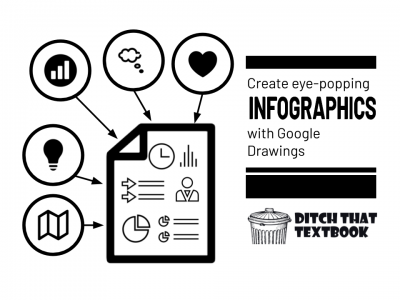
Infographics are visually stimulating and force us to summarize well. What if we did more infographics in schools and less research papers?
You (and your students) can create infographics with Google Drawings + The Noun Project.
Note: I have no relationship with The Noun Project aside from being a proud, paid NounPro member. I have no affiliate relationship with them, so if you register for a NounPro account or use their site, I receive no compensation of any kind. The Noun Project is just a tool I use all the time and love!
For notifications of new Ditch That Textbook content and helpful links:
Are you looking for quality, meaningful professional learning that both equips and inspires teachers?
Matt provides in-person and virtual keynotes, workshops and breakout sessions that equip, inspire and encourage teachers to create change in their classrooms. Teachers leave with loads of resources. They participate. They laugh. They see tech use and teaching in a new light. Click the link below to contact us and learn how you can bring Matt to your school or district!
Is Matt presenting near you soon? Check out his upcoming live events!

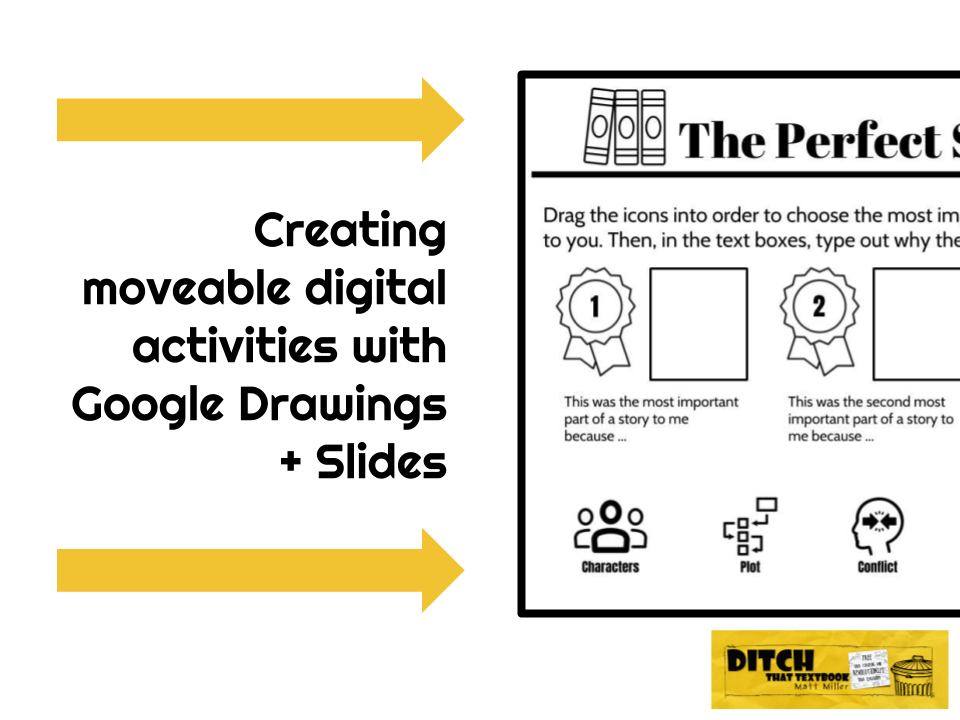
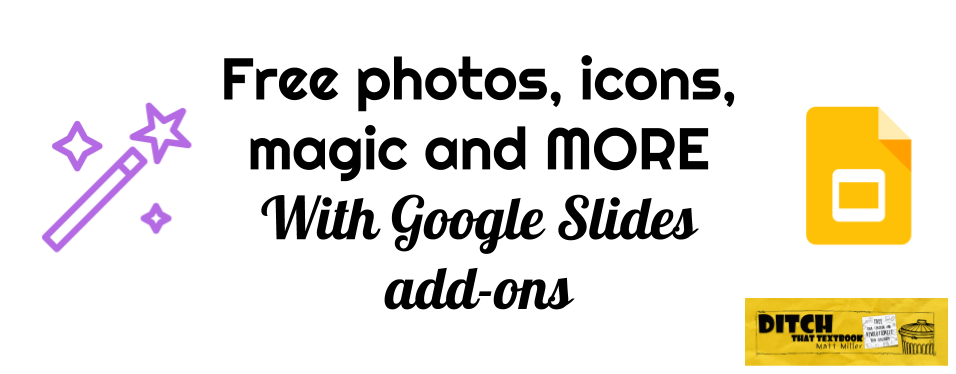
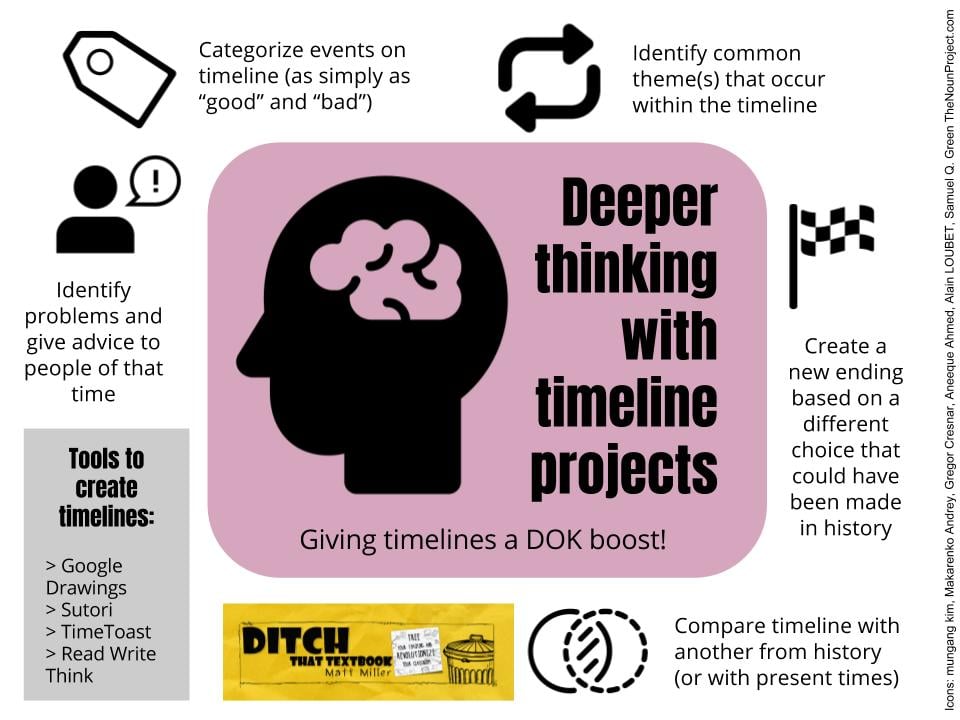


Matt,
I love the Noun project! I have middle school students aged 12-14 making infographics.
I was disappointed when I read this in the Noun Project’s Terms of Use “if you are under 16 years of age, you are not authorized to use the Services, with or without registering.”
Do you have any suggestions for sites they would be able to use at their age that are on par with the Noun project?
[…] 10 ways icons from The Noun Project can impact learning for more […]